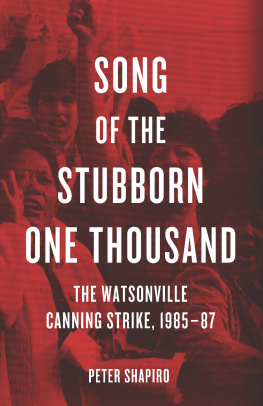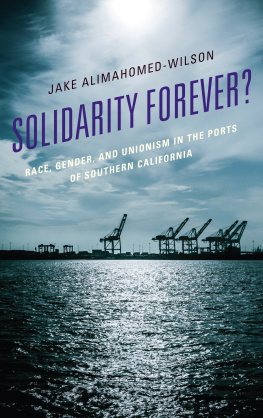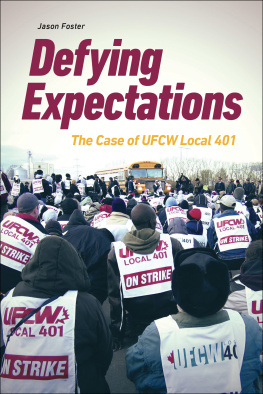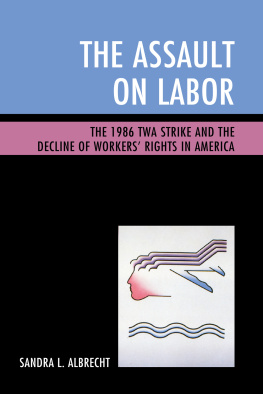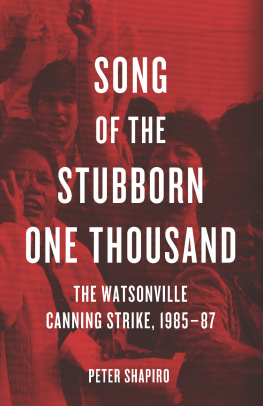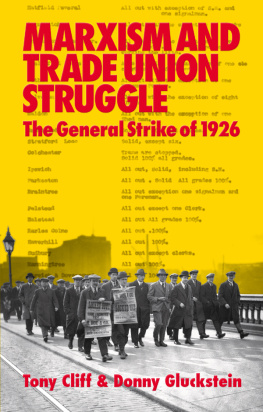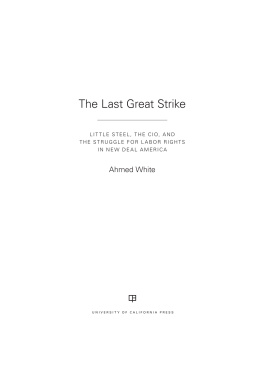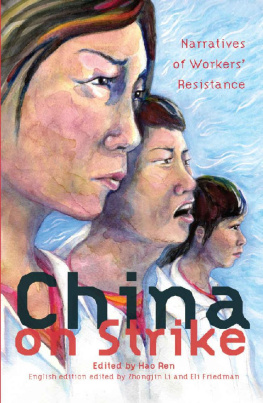2016 Peter Shapiro
Published in 2016 by
Haymarket Books
P.O. Box 180165
Chicago, IL 60618
773-583-7884
www.haymarketbooks.org
info@haymarketbooks.org
ISBN: 978-1-60846-749-5
Trade distribution:
In the US, Consortium Book Sales and Distribution, www.cbsd.com
In Canada, Publishers Group Canada, www.pgcbooks.ca
In the UK, Turnaround Publisher Services, www.turnaround-uk.com
All other countries, Publishers Group Worldwide, www.pgw.com
This book was published with the generous support of Lannan Foundation and Wallace Action Fund.
Cover design by John Yates. Cover image courtesy of Unity .
Printed in Canada by union labor.
Library of Congress Cataloging-in-Publication data is available.
10 8 6 5 4 2 1 3 5 7 9
Contents
Preface
I n May of 2007 I took a day off from my job delivering mail in Hillsboro, Oregon, to attend a plenary session of the Pacific Northwest Labor History Conference in Portland. The featured speaker was Joseph McCartin, who was at the time still working on Collision Course , his seminal book on the air traffic controllers strike of 1981. The subject of McCartins talk was a grim one: the virtual disappearance of the strike as an effective weapon in the arsenal of the US working class since the 1980s, when organized labor suffered a succession of catastrophic setbacks.
McCartin noted that an entire generation of workers has grown up with little or no conception of what it means to walk a picket line. He rattled off a litany of Reagan-era walkouts that ended not just in the unions defeat but in its outright decertification: strikers had either returned to work without union representation or had not returned to work at all, having been permanently replaced by strikebreakers.
After his presentation I approached him and told him I knew of one strike during that period that had the opposite outcome. I pointed out that it had been waged against an employer who tried the same strategy McCartin had spoken of in his talkprovoking a walkout and prolonging it until it was legally possible to decertify the union. I mentioned that the union itself was largely dysfunctional at the start of the strike but was revitalized in the course of it. I spoke of the strikers themselves, largely Mexican women with little or no prior strike experience, who showed an extraordinary capacity for self-organization. I told him how in the end the owner of the struck plant was forced to sell it in order to stay out of bankruptcy court, and a thousand strikersnot one of whom had crossed the picket linesigned a collective bargaining agreement with the new owner and returned triumphantly to work after eighteen months.
McCartin heard me out. When I was done he said simply, You should write about it.
A year later, having retired from the Postal Service, I decided to take his advice. It took a little longer than I expected. The first two chapters came quickly enough, but not until I returned to the Bay Area after a twenty-year absence was I able to give the Watsonville Canning strike the attention it required and deserved. I was able to track down new interviewees and follow up on interviews I had done earlier. I spent long uninterrupted hours at the Labor Archives and Research Center at San Francisco State University, which houses not only Frank Bardackes papers on the strike but also the voluminous and as yet uncatalogued archives of Teamsters Local 70. The latter includes an entire box of material on Watsonville that proved extraordinarily valuable, since the Teamsters role in the strike was as complicated as it was critical.
I hope the results justify the effort. For all its drama, there has been remarkably little written about the Watsonville Canning strike, and no comprehensive account of it. Kim Moodys influential book An Injury to All is dedicated in part to the Watsonville strikers but devotes only a few pages to the strike itself. A handful of monographs have focused on one or another aspect of the strike that reflect the authors particular scholarly concerns, but none has attempted a full overview.
Several months after the strike ended, Frank Bardacke, a longtime left activist deeply involved in the Watsonville strike support work, published a thoughtful discussion of the struggle in the Trotskyist journal Against the Current . His essay is worth reading, but it is a work of political analysis rather than narrative history. Jon Silvers documentary film Watsonville on Strike , which has been broadcast several times on public television and is therefore probably the most widely circulated account of the strike, provides a vivid visual record. I watched it repeatedly in researching this book and found it more than helpful. But an hour-long film, however skillfully made, cannot do full justice to such a complex story, and I have some interpretive differences with Silver (and a few factual ones as well) that will be apparent to anyone who has seen the movie and reads this book.
Before going further, I should disclose my own personal connection to the material. Frank Bardackes essay includes a discussion of the left activists who were involved with the strike; he describes them as belonging to two distinct camps. As it happens, Frank was in one camp and I was in the other. Throughout the 1980s I served as labor editor of Unity , published by the now-defunct League of Revolutionary Struggle. The paper sought to persuade its readers that an effective movement for working-class political power was not only necessary but also possible. As the person responsible for its labor coverage, I often found myself hard-pressed to find encouraging things to say about what sometimes seemed like a continuing series of disasters.
The Watsonville strike was another story. Unity was in good position to cover it, since the League had a history of work in the California canneries, played an active role in the strike, and was able to develop strong relationships with many strikers. More fundamentally, the strike was a badly needed antidote to the confusion and despair that threatened to overwhelm so many union activists in that difficult time. It showed that working people were still capable of winning major victories in the face of the most daunting odds; it held out the hope of better outcomes for a besieged labor movement. The struggle left me both moved and inspired.
I was in Watsonville for one of the big support rallies when Frank Bardacke came up to me on the picket line and struck up a conversation. He began by telling me that a certain League activist who had become prominent in the strike was one of the best organizers Ive ever seen; he then proceeded to explain to me everything he thought the League was doing wrong.
Frank and I continued this conversation when I interviewed him for this book, and, while I found it enjoyable and often thought-provoking, I have not attempted to use the book to settle our differences. To do so at this late date would be counterproductive, since we have no way of knowing for sure how the course of events would have been altered if certain people had done certain things differently.
Counterfactual accounts of historical events can make for good fiction: both Philip Roth and Philip K. Dick have written absorbing novels that try to imagine what life would be like if the United States had succumbed to fascism instead of resisting it successfully on the battlefield. But theirs are works of the imagination, not history, and as Eric Hobsbawm has written, It is not the historians task to speculate on what might have been. His duty is to show what happened and why.
Mindful of Hobsbawms words, I have tried to keep my editorializing to a minimum, and have resisted the temptation to second-guess those who lived through the events under discussion. Not only would it be presumptuous of me to second-guess them, it would also make it that much harder for me to comprehend their motivations and actions.

